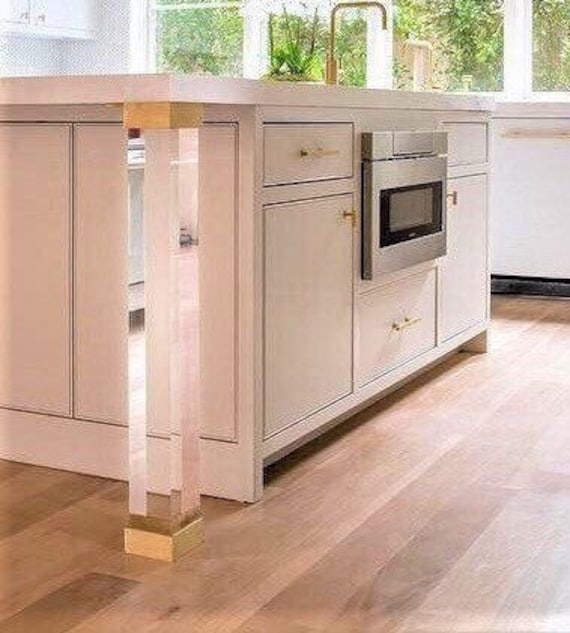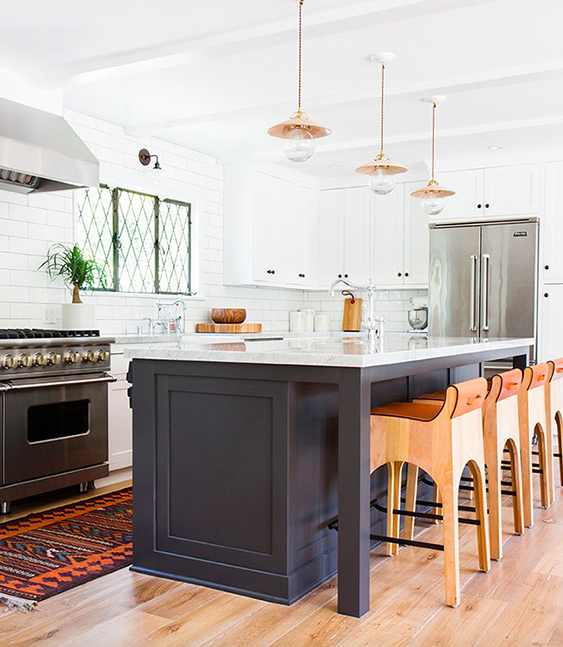The Leading Kitchen Island Leg Styles to Complement Any Type Of Design Aesthetic
The Leading Kitchen Island Leg Styles to Complement Any Type Of Design Aesthetic
Blog Article
The Significance of a Sturdy Cooking Area Island Leg in Creating a Practical Food Preparation Location
A strong kitchen island leg offers as a fundamental part in developing a practical cooking environment, providing necessary assistance for both the countertop and different kitchen area activities. As cooking areas develop into multifunctional areas for cooking, eating, and socializing, the selection of materials and style considerations for island legs ends up being progressively crucial.
Benefits of Sturdy Island Legs
Providing necessary assistance, sturdy kitchen island legs play a pivotal duty in improving the functionality and toughness of kitchen islands - kitchen island leg. These legs not just birth the weight of the kitchen counter and any extra products positioned on the island, but also add to the total stability of the structure. A well-supported cooking area island guarantees that it stays upright and functional, also under hefty use, which is particularly essential in active kitchen environments
Furthermore, durable island legs can boost the visual charm of the kitchen. They supply a strong structure that can match different style styles, from modern to traditional. This flexibility allows homeowners to personalize their cooking area islands according to individual taste while making sure that the structural integrity stays uncompromised.
In addition to their helpful function, durable kitchen island legs can additionally boost security. A secure island lowers the threat of crashes created by tottering or tipping, which is particularly essential in households with kids or elderly individuals. Solid legs can assist in a seamless flow of activities, allowing for effective dish preparation and social communications within the cooking area space. Inevitably, purchasing tough cooking area island legs is vital for a useful and visually pleasing cooking area.
Materials for Kitchen Area Island Legs
When picking products for kitchen island legs, sturdiness and visual appeal are critical elements to take into consideration. The most typical products include wood, metal, and engineered timber, each offering unique benefits.
Wood, such as oak, maple, or cherry, is a classic selection because of its toughness and classic beauty (kitchen island leg). It can hold up against considerable weight and is resistant to put on, making it optimal for high-use kitchen area settings. Furthermore, hardwood can be stained or repainted to enhance different kitchen styles
Metal legs, usually crafted from stainless steel or wrought iron, give a modern and commercial look. They are exceptionally strong and can support substantial loads while being immune to dampness and warm, which is beneficial in a cooking area. Metal legs can likewise be quickly cleaned up, boosting their practicality.

Design Considerations for Stability
The selection of materials for kitchen area island legs directly influences the design considerations for stability. When developing a kitchen area island, it is paramount to assess the weight-bearing ability of the picked products. Much heavier products, such as strong timber or steel, generally give greater stability, specifically under the tension of daily usage.
Additionally, the leg design should incorporate correct geometry to boost security. A broader base boosts the support location, minimizing the threat of wobbling or tipping. Consideration must additionally be provided to the elevation of the legs; out of proportion leg lengths can lead to inequality, compromising the overall stability of the island.
Furthermore, the distribution of weight across the island is important. Ensuring that the leg positioning lines up with the heaviest elements, such Click This Link as kitchen counters and devices, will further improve stability.
Maintenance Tips for Durability

Cleaning is another essential element of upkeep. Depending on the product of the legs-- whether wood, steel, or composite-- proper cleaning techniques ought to be utilized. For wood legs, a gentle clean with a suitable wood and a moist fabric cleaner will assist protect their coating. Steel legs might call for a light polish to avoid corrosion and keep their appeal.
In addition, tightening up screws and screws frequently can guarantee security and prevent tottering. If the kitchen area island experiences heavy usage, consider reinforcing the legs with additional brackets or sustains to boost sturdiness. Applying a protective surface or sealant can protect against wetness and discolorations, prolonging the life expectancy of the legs. By following these upkeep ideas, home owners can guarantee their kitchen area pop over to this site island legs remain durable and practical for several years to come.
Picking the Right Leg Design
Regular maintenance ensures that cooking area island legs continue to be durable and practical, yet picking the right leg design is just as important for both appearances and support. The selection of leg design can substantially influence the general design and consistency of your kitchen area.

Performance is one more critical aspect. Thicker legs or those with a durable base can sustain much heavier countertops and equipment, enhancing the island's utility. Conversely, slender legs might develop a ventilated look, ideal for lighter layouts yet possibly much less encouraging.
Verdict
In recap, the relevance of sturdy kitchen area island legs can not be overstated in the development of a functional cooking location. These legs offer crucial support, enhance security, and add to the general aesthetic of the kitchen area. By meticulously picking suitable materials and designs, in addition to implementing correct maintenance techniques, the long life redirected here and performance of kitchen area islands can be made sure. Eventually, purchasing robust island legs is fundamental to attaining a efficient and secure culinary environment.
A strong kitchen island leg serves as a fundamental part in establishing a useful cooking setting, offering essential support for both the kitchen counter and various kitchen tasks.Offering essential assistance, sturdy cooking area island legs play a crucial role in boosting the functionality and durability of kitchen area islands. Inevitably, investing in strong kitchen island legs is crucial for a functional and aesthetically pleasing cooking location.
Consideration ought to additionally be given to the height of the legs; out of proportion leg lengths can lead to discrepancy, endangering the total stability of the island.
Wooden legs supply heat and a timeless look, while metal legs use a industrial and contemporary feeling.
Report this page